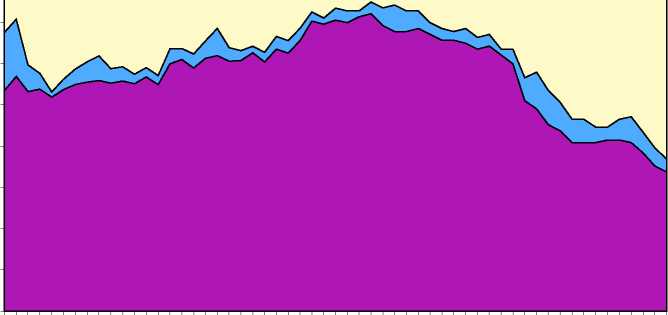100.0
90.0
80.0
70.0
60.0
50.0
40.0
30.0
20.0
10.0

□ Dictatorship □ Intermediate (civil war, foreign occupation, transition...) □ Democracy
Source: Polity IV data set.
Figure 1: Political regimes (% of countries in the world)
them from anarchy. There is political specialization when some individuals or groups
play political roles and others not. These politicians enforce their decisions thank to the
monopoly of organized force. The third criterion distinguishes dictatorship and democracy
by their procedures along the lines of modern political thought (Dahl 1971). Therefore,
this definition suggests the existence of two possible forms of government - dictatorship
or democracy - and one possible situation characterized by the absence of a government.
Since Kelsen’s General Theory of the Law and State (1945) the dichotomic classification
of political regimes has been widely accepted. Kelsen suggested to oppose democracy and
autocracy3 based on the level of political liberty. The procedural approach of modern
3The term ’autocracy’ has been widely replaced in the literature as in the public by the term ’dicta-
torship’ after the Bolshevik and the fascist regimes of the 1930s (Bobbio 1989).
More intriguing information
1. The Composition of Government Spending and the Real Exchange Rate2. DEVELOPING COLLABORATION IN RURAL POLICY: LESSONS FROM A STATE RURAL DEVELOPMENT COUNCIL
3. The Dictator and the Parties A Study on Policy Co-operation in Mineral Economies
4. A Critical Examination of the Beliefs about Learning a Foreign Language at Primary School
5. Labour Market Flexibility and Regional Unemployment Rate Dynamics: Spain (1980-1995)
6. The name is absent
7. Towards a Mirror System for the Development of Socially-Mediated Skills
8. The name is absent
9. Gender and aquaculture: sharing the benefits equitably
10. Licensing Schemes in Endogenous Entry